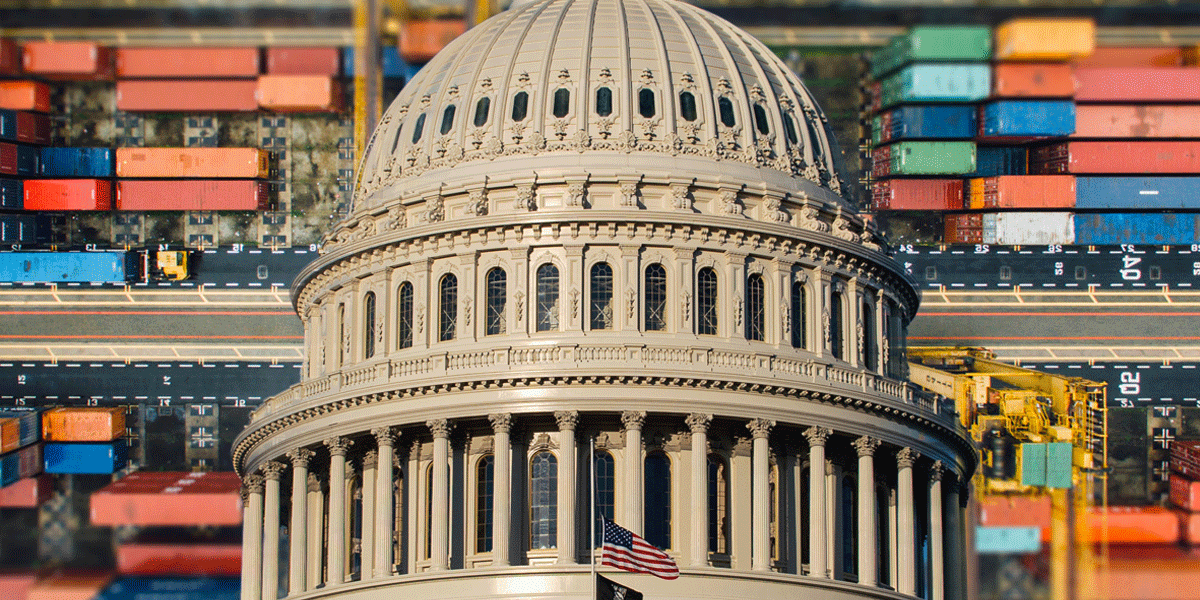Download the PDF

The implications of steel, aluminium and reciprocal tariffs
Another week, another raft of tariff announcements and threats from US President Trump. In this Weekly Brief, we discuss the details and potential impacts of the latest tariff developments. As flagged over the weekend, Trump revoked exemptions to the steel and aluminium tariffs implemented during his first term in office. In doing so, he also increased the tariffs on aluminium from 10% to match the 25% tariffs set on steel imports.
The move affects close trading partners such as the EU, Canada, Mexico, South Korea, Japan and Australia. The elimination of these exemptions will impact Canada, Mexico and the EU the most, being the three largest sources of steel that previously benefitted from the exemptions. These regions represent around half the value of US steel imports. However, despite being significant suppliers of these resources to the US, steel and aluminium exports together make up only 2½% of Mexico and the EU's and 6% of Canada's exports to the US.
From a domestic perspective, there is no need to panic. President Trump has indicated he will consider giving an exemption to Australia. If an exemption is not eventually granted, the Australian companies that export steel and aluminium will of course be heavily impacted, but on an economy wide level the impact will be minimal. Steel and aluminium exports account for less than 4% of our goods exports to the US and less than 0.2% of our goods exports to the world.
In a potentially more significant development, overnight President Trump signed a memorandum to develop a plan that implements reciprocal tariffs on trading partners. The plan is to be delivered over the coming months, with US officials indicating that countries will be examined one by one, beginning with those with large trade surpluses with the US and those with high tariff rates. While the details are still forthcoming, Trump has indicated that reciprocal tariffs would entail lifting tariff rates on goods from other countries to equal those charged by each respective country.
The broad reaching nature of reciprocal tariffs means they have the potential to have significant impacts both on the US and its trading partners. On one hand, reciprocal tariffs would be highly likely to increase US domestic inflation through higher imported goods prices. From the perspective of other countries, tariffs are potentially detrimental to growth, with producers forced to either attempt to find other markets or crimp their margins to offset the impact of tariff hikes on demand.
The European Union (EU) has been highlighted as a source of imports that could significantly impact US inflation. This is because the EU provides around a fifth of the value of US imports. Looking across the range of goods that the EU exports to the US and based on WTO tariff data, we estimate a reciprocal product-by-product tariff increase would see the weighted average tariff rate applied to the EU increase by around 1½%, similar to our baseline assumption for tariff hikes on the EU. However, risks remain for the EU, given that an area of Trump's ire has been European automobile exports to the US, with the EU currently applying an 10% tariff on passenger vehicles. In contrast, the US only applies a 2.5% tariff on those vehicles. Although a fact not highlighted by Trump is that the US applies a 25% tariff on goods transporting vehicles including pickup trucks and many SUVs. Also indicated as being in the firing line are pharmaceuticals. Vehicles and pharmaceuticals represent around one third of EU exports to the US.
Developing economies with high tariff rates aimed at protecting their domestic industries who run a trade surplus with the US (i.e. export more to the US than they import from the US) are likely to come under fire. Two such examples are Vietnam and India, who recorded trade surpluses of US$123.5b and US$45.7b with the US in 2024, and represent 4% and 3% of the value of US imports, respectively. If reciprocal tariffs were implemented on these countries, our preliminary estimates indicate that the average tariff rates applied to their exports would increase by around 10%.
More broadly, our expectation for the Trump tariff strategy has been that larger tariffs threats would be used as a bargaining tool to extract concessions from trading partners. With countries like India and Vietnam so exposed to potential reciprocal tariffs, it is not surprising that Indian Prime Minister Modi is reportedly considering lowering tariffs on the US and the Vietnamese foreign ministry has publicly indicated it is ready to engage on trade.
As an aside, Australia is in a good position with respect to reciprocal tariffs. Australia is one of 20 countries that has a free trade agreement with the US. As a result, virtually all the goods coming into Australia from the US have no tariffs applied to them. This means that a reciprocal tariff regime from the US wouldn't noticeably impact Australian goods flowing into the US. However, there does still exist some uncertainty as to how the US will treat Australia’s GST, given that the memorandum included a reference to responding with reciprocal tariffs to “unfair, discriminatory, or extraterritorial taxes imposed by our trading partners on United States businesses, workers, and consumers, including a value-added tax”.
As countries progressively face scrutiny from the US, we expect they will engage in negotiations to mitigate the extent to which the US increases tariff rates. While our baseline forecast remains for a soft-landing in the US economy, with Trump progressing swiftly on widespread tariffs, the downside risk to US growth and upside risks to inflation and interest rates continue to build.
